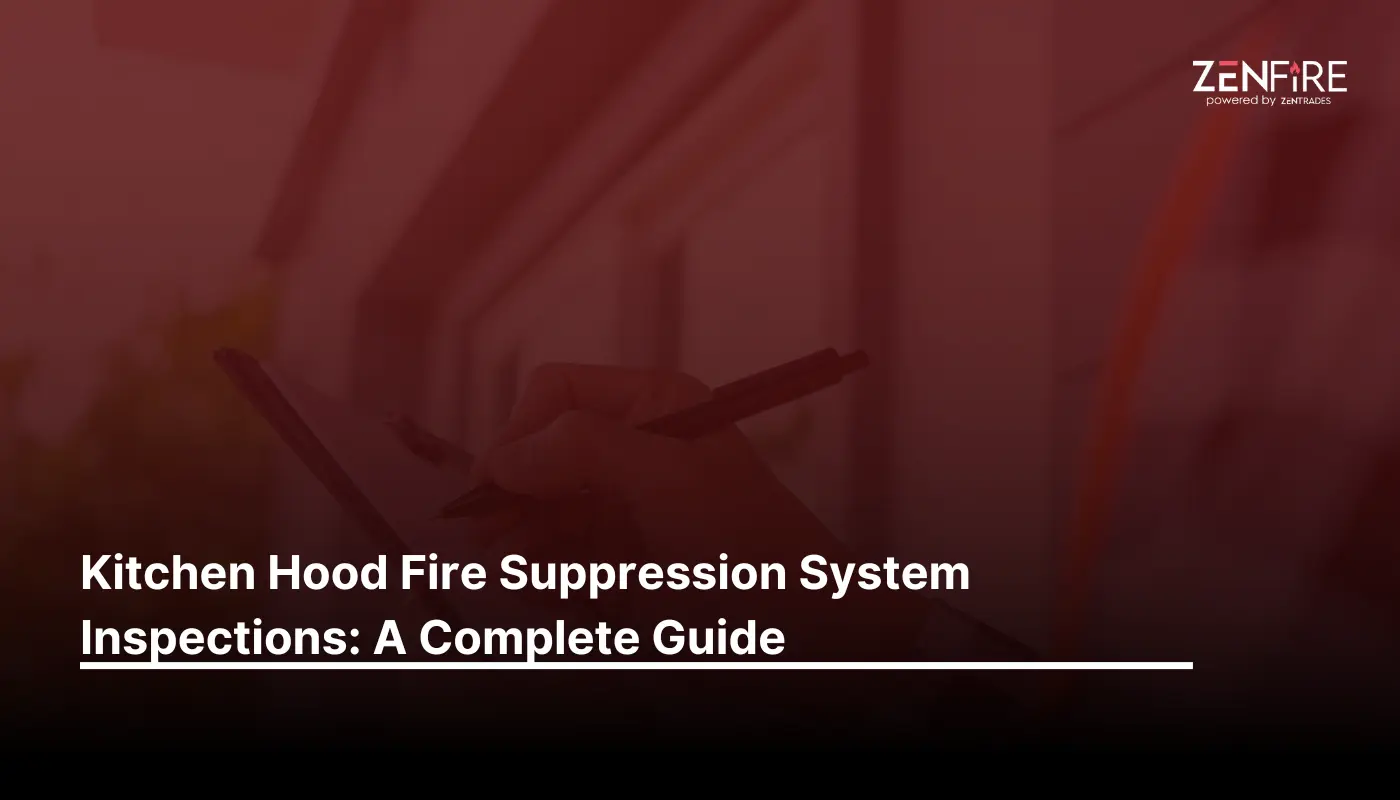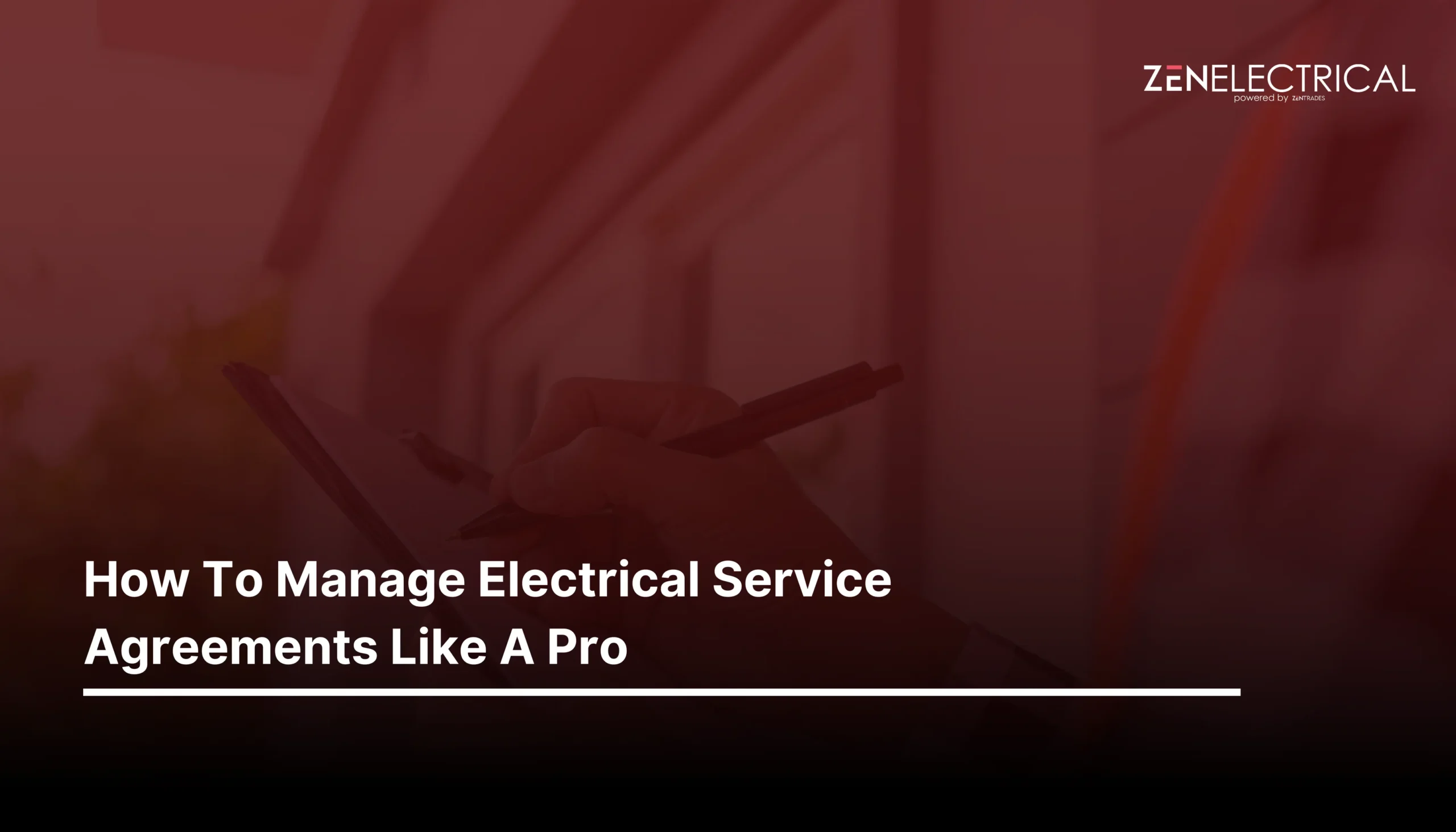Kitchen Hood Fire Suppression System Inspections: A Complete Guide
- Field Service Management
- 9 Min Read
Kitchen fires can spread and escalate quickly, causing extensive damage and injuries. The availability of highly flammable substances in the kitchen makes it easier for the fire to spread quickly. Not just the area, but it can also lead to fatal situations causing havoc at a large scale.
Commercial kitchens can be high-risk zones containing highly flammable materials like oil and grease, high temperatures, and exposed fire. Hence, special safety equipment is needed to protect against serious fire hazards in commercial kitchen settings.
This is where a kitchen hood fire suppression system comes into play.
Here What We Cover
Why Need A Kitchen Hood Fire Suppression System
A kitchen hood fire suppression system is installed specifically for commercial kitchens. It is placed above cooking equipment such as the stove, gas supply, fryers, etc., where the chances of catching a fire are maximum. These areas involve working with volatile substances where the fire risk is higher due to the cooking processes involved.
A hood fire suppression system provides fire protection by detecting and suppressing fires as quickly as possible to prevent them from spreading to other areas of establishments or causing injuries on a large scale.

Use our free estimate template now
Make winning quotes in minutes—for any industry and any job.
Components Of A Kitchen Hood Fire Suppression System
A kitchen fire suppression system usually encompasses a broad range of fire suppression methods deployed in a kitchen environment. These fire code requirements can include fire sprinklers, fire blankets, extinguishers, and other fire safety equipment strategically placed throughout the area in case of a fire emergency.
A kitchen hood fire suppression system, on the other hand, targets the central or high-risk zone of a commercial kitchen and helps suppress the ongoing fire and prevent its spread, enabling maximum fire protection in commercial cooking operations.
The main components of a commercial kitchen hood fire suppression system usually comprise the automatic suppression system installed within the kitchen vent hood.
However, a proper kitchen hood fire impression system consists of the following components:
Detection System: Your smoke and heat detectors are placed here. It helps quickly detect the presence of smoke agents or any temperature rise that can indicate the early phase of the fire.
Suppression System: This enables the release of chemicals that help extinguish the fire and prevent reignition. It usually consists of dry or wet chemicals or carbon dioxide that efficiently smother the fire.
Duct System: These are the defined pathways through which the chemical agents are released into the source of the fire.
Control System: This is the primary controller of the entire hood fire suppression system. It monitors the inputs from detectors and enables ventilation control and the release of extinguishants through the pipes. This works automatically but can also be operated manually if the heat is not detected soon enough.
Vent Fans: These act as exhaust fans to clear the smoke from the area and make way for fresh air.
How Do Kitchen Hood Fire Suppression Systems Work?

The kitchen hood fire suppression system follows an effective step-by-step procedure.
Hood fire suppression systems get activated automatically when fire is detected. It can also be turned on manually in some instances when the smoke agents or the heat of the fire are not detected in their early phase.
After the system components are activated, chemical agents are passed through the duct system, comprising pipes and nozzles. These agents could vary from dry chemicals to wet extinguishants that can form a soapy layer over the grease fire.
This process is known as saponification. When alkaline mixtures are combined with grease fires, they create a foam layer on the surface, preventing the fire from spreading and preventing its rekindling.
Fire suppression systems will also interrupt the gas line and disable the power supply of the appliances in their surroundings, preventing shock hazards. It will also close the gas valves to reduce the supply of volatile substances that can start the fire again.
After successfully putting off the fire, the exhaust fans in the hood fire suppression systems will work to clear the smoke from the area.
How Should I Prepare for a Kitchen Hood Fire Suppression System Inspection?
You need to protect your establishment from a severe fire hazard. To that end, preventive measures must be taken to avoid grease fires or accidental fire risks in your commercial kitchens.
For this reason, you should immediately install a kitchen hood fire suppression system and have it inspected by a certified technician. This can ensure that your system works properly and complies with the rules and regulations of the National Fire Protection Association (NFPA).
Here are some steps that you can follow to prepare for a Kitchen hood fire suppression system inspection by a certified fire inspector.
Step 1: Adhere To National Fire Protection Association Protocols
You need to get acquainted with the local fire safety regulations and standards, as well as the NFPA. These same fire codes and protocols mandate regular inspections of fire suppression systems.
Step 2: Schedule Your Inspection
Get an appointment for an inspection with a certified technician or a qualified safety inspector.
Step 3: Test Your Equipment
Make sure to test your fire suppression system manually or by simulating a fire. Also, check for signs of damage or wear and tear.
Step 4: Shut Down Appliances
Shut down all fire suppression equipment and appliances before the inspection process and clear access to the fire suppression system for easy access, avoiding hindrance.
Step 5: Keep Important Documents Handy
Keep all necessary kitchen and fire suppression system documents handy, like maintenance reports, service records, or reports from previous inspections.
Get posts like this in your inbox.
Keep learning how to run a 5-star business with our bi-weekly newsletter.
What To Expect During Your Kitchen Hood Suppression System Inspection Process?
During your suppression system inspection, ensure you are thorough with your pre-inspection to avoid any hindrance or delay.
Here’s a detailed overview of what to expect during the kitchen hood fire suppression system inspection certification process.
Step 1: Visual Inspection
The inspection process usually starts with the fire safety investigator visually inspecting your suppression system, equipment, fire alarm, sprinkler, and other appliances.
This also includes checking for visible damage, verifying proper hood installation, and meeting the requirements of NFPA and local fire codes.
Step 2: Functional Testing & Inspection
The safety inspector from your licensed fire protection company will conduct tests on all components of your hood system, ensuring that the system activates and responds appropriately to the simulated fire test.
This includes testing the duct system to ensure it is positioned correctly for a uniform distribution of suppression agents and to enable an unrestricted flow of chemicals.
Your fire safety inspector will also thoroughly check the chemicals, ensuring their pressure levels are within the specified range and the agent storage container is free from leaks or damage.
Lastly, checks will be run on the central control system to ensure no faulty codes can be found.
Step 3: Documents Review
Your documents and maintenance contracts will be reviewed to ensure compliance with regulatory requirements and to check for previous issues identified during past inspections.
After the entire inspection process has been concluded, the fire safety inspector will provide you with recommendations and suggestions based on their findings.
Once your suppression system has passed the inspection, you’ll receive a certification that indicates it adheres to the necessary standards and regulations. If not, you might need to make the necessary adjustments and schedule a follow-up inspection.
Your fire safety inspector will leave you with a Commercial Cooking System Service and Inspection report and send one to your local fire department. Once your kitchen suppression system inspection is complete, your commercial kitchen is set for another six months.
How Often Should I Conduct Kitchen Hood Fire Suppression System Inspections?
According to NFPA 96, kitchen hood suppression systems should be inspected bi-annually, that is, every six months. The system should also be thoroughly checked for grease build-up every six months. Additionally, suppose the amount of grease-laden vapors can be shown to be minimal. In that case, the Authority Having Jurisdiction (AHJ) may extend the inspection frequency to 12 months instead of every six months.

Explore a better way to grow your business. Book a free demo now!
Get organized, win jobs, and wow customers.
Book A Free Demo with ZenTrades Today!
Related Reading
Why Your Field Software Management Software Needs QuickBooks Integration
ZenTrades Why Your Field Service Management Software Needs QuickBooks Integration Read More Request Demo...
Read MoreZenTrades How To Manage Electrical Service Agreements Like...
Read MoreZenTrades The Best 5 Jobber Alternatives In 2023...
Read More

